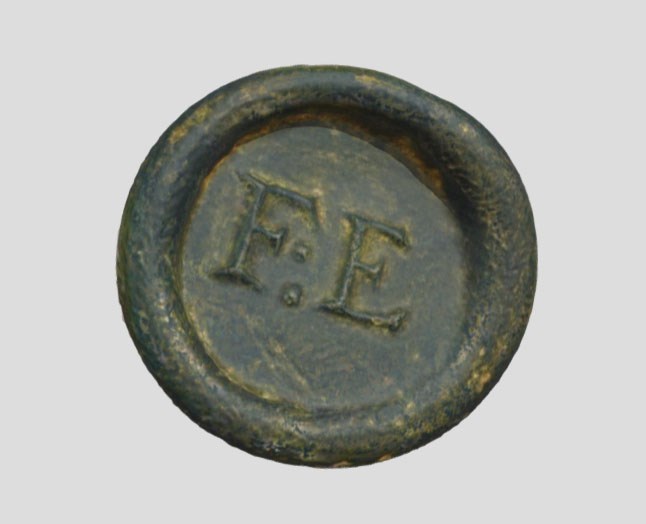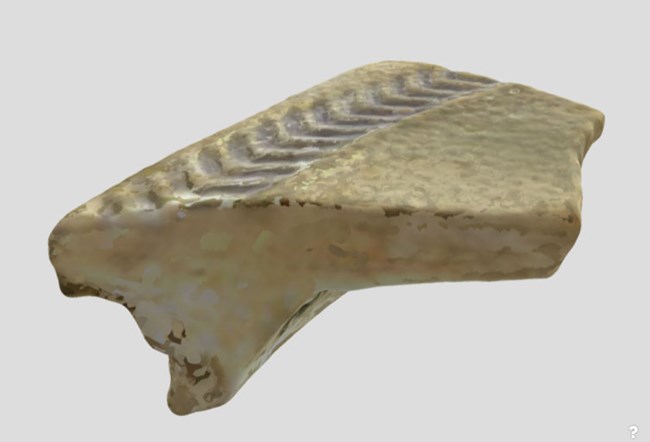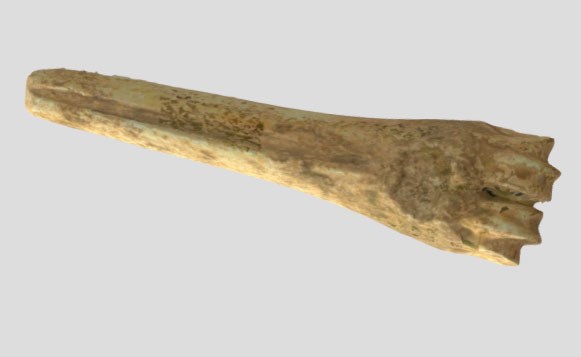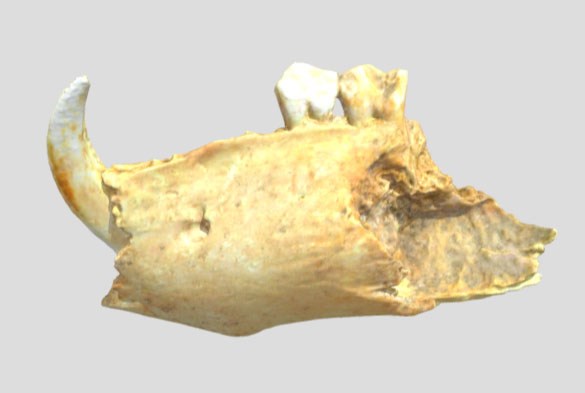Last updated: August 23, 2024
Article
Archeology at the Eppes Family Plantation at Grant’s Headquarters at City Point (An Informal Learning Activity)
Archeology reveals information about the people who lived at the Eppes Family Plantation. Now called Grant’s Headquarters at City Point, part of Petersburg National Battlefield, these sites are located on a peninsula on the James River, not far from the mouth of the Appomattox River in the state of Virginia. Today, Grant’s Headquarters at City Point helps the National Park Service tell the story of over 12,000 years of history: from the first people to explore the area, to the establishment of plantations, through the Civil War.
About This Activity
In this informal learning activity, we will explore ways that the archeological artifacts can provide insight about people's lives in the past.
Objectives: 1) Explore how archeology reveals information about people living at the Eppes Plantation at Grant’s Headquarters at City Point and 2) Study artifacts and complete activities to deepen your understanding.
Audience: This online activity is developed primarily for 4th-grade audiences but can be scaled to lower or higher grade levels. It provides a starting point that you can adapt to suit the needs of your learners.
Skills and Standards: Each section asks learners to draw on skills such as reading comprehension, independent or group work, writing, and using evidence to support conclusions. The activities provide opportunities to meet several Common Core State Standards, Virginia State Standards, and National Council for the Social Studies Curriculum Standards Themes. The content can be adapted to address Virginia State Standards for grades 4, 5, 8, and 11.
For more information, visit the park’s website. Also try the other two activities in this series: Archeology and the Indigenous Peoples at Grant's Headquarters at City Point and Archeology and When War Came to the Hare House in the Eastern Front.
The Eppes Plantation
The Eppes family established plantations on and around Grant’s Headquarters at City Point, beginning in the mid-17th century. One way they amassed land was by sponsoring Europeans to come to America in exchange for their service for a period of years, for which the family was awarded land. They also enslaved Africans, who were the Eppes’ legal property.
Sometimes archeologists know a lot about the people who lived at a place – like the Eppes family -- such as their full names, family lineages, ages, and sources of income. Most times, as for indentured servants or enslaved people, there is very little specific information unless the Eppes family recorded it in personal records or the local administration collected it.
Artifact Study
Archeology helps fill in missing details about people’s lives and work. Most artifacts, however, cannot be tied to an individual. They invite us to ask questions: What was this object used for? Who used it? Why was it lost?
Archeologists know that the Eppes family hired construction workers, enslaved Africans, and had indentured servants. They lived and worked on the property inside the Eppes’ house, for the general upkeep of the area, and to plant and grow crops like tobacco. Although we do not know their names, we do know the functions of the recovered artifacts. These functions help us to understand what people did.
Each of these artifacts was found by archeologists at the Eppes Plantation. Look closely at them using the 3d viewer and answer the questions.

Wine Bottle Seal
Excavations within the cellar of the early 18th-century dwelling found a glass wine bottle seal with the initials "FE." It may have belonged to Francis Eppes, who lived at the site in the mid-to-late 18th century, but little more is known about him.Who do you think drank this wine? Who was not allowed to drink it? Who bought it? Who served it? How might wine have figured into the daily life of the plantation?
View the wine bottle seal in 3d.

Ceramic Lid
“Scratch blue” is the type of blue decoration on this 18th-century piece of ceramic. It was part of the edge for a lid. The top of the lid is the flat part with the blue line decoration. The curved edge is where the lid sat on a container. You probably have ceramic containers with lids in your own home.Think about what the container was used for, and by whom. Who might have put food in this container? Who ate from it? Who bought it? Who cleaned it and put it away?
View the scratch blue lid in 3d.

Bone Awl
An awl is used to poke holes into fabric or leather, then thread or thong is pushed through to stitch pieces together. The pointy end pierced the fabric and the knobby end was held in the hand. Awls in the 18th century were commonly made of bone. In your home, there might be a sewing kit with metal needles for sewing, which are the modern equivalents of an awl.Think about the awl. Where do you think the bone came from? Who used the awl? What makes you think that?
View the bone awl in 3d.

Pig Jaw
Everyone needs to eat! But not all parts of an animal are edible. The inedible parts become part of the archeological record. Archeologists found discarded mammal bones, like this pig jaw also called a "mandible"), at the Eppes plantation. In your home, food is grown or purchased and then the waste discarded in the garbage.Consider how pigs figured into the household's eating. Who do you think raised the pigs and cared for them and other animals? What kinds of food might the residents have made? Do you think everyone got to have an equal share?
View the pig mandible in 3d.
Try It
How do archeologists extrapolate information about the everyday lives of the Eppes family, enslaved people, and indentured servants from the artifacts found on the Eppes’ plantation? They make an interpretation based on evidence, such as the artifacts.You’ve already thought closely about each of the artifacts. Now put them together into a creative writing story.
Create a main character to narrate the story. Use each of the artifacts – the FE glass bottle seal, scratch blue ceramic lid, bone awl, and the pig jaw – in the story. Add additional artifacts to flesh out the story you want to tell.
Help Us
If you find any kinds of archeological artifacts -- like the ones in this online activity -- during a visit to Petersburg National Battlefield, or at any other national park, leave it be! It is illegal to remove archeological artifacts or to disturb archeological sites on federal lands, like national parks.
You can help the National Park Service preserve and protect the history of Petersburg National Battlefield.The Archaeological Resources Protection Act is the federal law that protects archeological sites and artifacts on federal lands, like Petersburg National Battlefield. Learn all about it at Learn the Law: The Archaeological Resources Protection Act.
Wondering what to do if you find an artifact during your visit to Petersburg? Here's What To Do If You Find an Artifact.
